Dies ist eine alte Version des Dokuments!
Chrysopogon zizanioides (L.) Roberty - syn.Vetiveria zizanioides (L.) Nash; Sorghum zizanioides (L.) Kuntze - Poaceae
vetiver, Vetiver
Perennial grass, up to 1.5m high. The name vetiver is derived from the Tamil: வெட்டிவேர் vettiver.
„Vetiver is most closely related to Sorghum but shares many morphological characteristics with other fragrant grasses, such as lemongrass (Cymbopogon citratus), citronella (Cymbopogon nardus, C. winterianus), and palmarosa (Cymbopogon martinii). Though it originates in India, vetiver is widely cultivated in the tropical regions of the world. The world's major producers include Haiti, India, Java, and Réunion…
Vetiver is mainly cultivated for the fragrant essential oil distilled from its roots. In perfumery, the older French spelling, vetyver, is often used… Due to its excellent fixative properties, vetiver is used widely in perfumes. It is contained in 90% of all western perfumes.“ http://en.wikipedia.org/wiki/Chrysopogon_zizanioides
„This species (Vetiver Grass) is said to have originated in India, but is now distributed throughout warm parts of the Old World and introduced into the S United States and West Indies. It has long been cultivated for the oil extracted from the aromatic roots, which is used in perfumery. More recently, its potential as a soil binder to prevent erosion has been recognized. It is planted in hedges for this purpose, particularly along the contours of sloping ground. The deep, non-invasive root system holds the plants firm, while the stiff, dense leaves trap soil and prevent it being washed away. It is also used as a forage grass.“ http://www.efloras.org/florataxon.aspx?flora_id=2&taxon_id=242312768
„The odour of vetiver oil is very complex, strong, warm-balsamic-woody with sandalwood, cedarwood, ambery,
and patchouli aspects and sweet-sour grapefruit- and rhubarb-like notes. Therefore, a lot of constituents will
contribute to the total sensory impression. The main descriptor of the odour is undoubtfully precious woody. Three primary alcohols, all of them major constituents, are responsible for the base note, at first the strong smelling allyl alcohol isovalencenol, but also vetiselinenol and khusimol. The complex woody note of these three alcohols is slightly reminiscent of cedarwood, but there is also an ambery tonality (vetiselinenol) and a grapefruit note (khusimol)… In contrast, the major constituent β-vetivone according
to Spreitzer et al., is not an important compound from the point of view of odour, although it displays
grapefruit and woody notes… The mixture of zizaenones, ziza(6,13)-en-3-one (2-β methyl group) and 2-epi-ziza(6,13)-en-3-one (2-α methyl group), smells like khusimone but weaker. The aldehydes zizaenal (exhibiting also aldehydic melon and floral notes) and eremophiladienal are valuable typical vetiver-like
elements…“
[Constituents of Haitian vetiver oil., Weyerstahl, P., Marschall, H., Splittgerber, U., Wolf, D., Surburg, H., Flavour and fragrance journal, 15(6), 2000, 395-412]
„Vetiver oil consists of a highly complex mixture of over 150 sesquiterpenoid constituents, and the composition as well as its odor quality depend decisively upon its origin… the sesquiterpenes (+)-α-vetivone, (-)-β-vetivone, and khusimol always occur in amounts up to 35%, and considered fingerprints, even though they do not contribute much to the typical odor characteristics associated with vetiver oil. Most decisive for the characteristic odor of vetiver oil are, according to Maurer, (-)-(3aR,6R,8aR)-khusimone and two dimethylnaphtalenones…
(-)-khusimone …, present in some 2% in the essential oil, is the only constituent perfumers and chemists both agree to belong to the odorous principle of vetiver…
Acetylation of vetiver oil with acetic anhydride mainly transforms the free alcohols into their corresponding acetates, which renders their odor less earthy and more dry woody, somewhat in a sandalwood direction.“
[Meaningful Scents around the World, Roman Kaiser, Zürich 2006, 291-295]
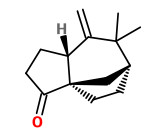 khusimone (vetiver-like, grapefruit, flowery) | 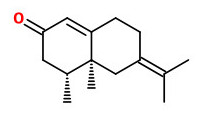 α-vetivone (vetiver, grapefruit-like, fruity) | 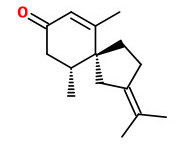 β-vetivone (woody-vetiver or lime-like, hesperidic, rosy, exotic fruit) |
„Although it originates in India, vetiver is widely cultivated in the tropical regions around the world. The world’s major producers include Haiti, India, Indonesia’s Java and the French island Réunion. α-Vetivone (CAS# 15764-04-2; (4R,4aS)-4,4a-dimethyl-6-propan-2-ylidene-4,5,7,8-tetrahydro-3H-naphthalen-2-one) has a warm pleasant powerful odor while β-vetivone (CAS# 18444-79-6; (5R,10R)-6,10-dimethyl-2-(1-methyl-ethylidene)-spiro[4.5]dec-6-en-8-one) has a quinolinelike, fruity (cassis, grapefruit) aroma with a woody by-note.“
[Vetivone and Khusimone: the Puzzling Vetiver Oil Components., Zviely, M., Perfumer & flavorist, 37(2), 2012, 46-50]
„The essential oils isolated from vetiver [Vetiveria zizanioides (L.) Nash.] roots collected from four locations in south India were analyzed by GC-FID and GC-MS. Eighty constituents, representing 94.5-97.8% of the oils, have been identified. The oils from Bangalore, Hyderabad, Kundapur, and Mettupalayam were rich in sesquiterpenes and oxygenated sesquiterpenes with cedrane, bisabolane, eudesmane, eremophilane, and zizaane skeletons. The main components of the four essential oils were: eudesma-4,6-diene (delta-selinene) + beta-vetispirene (3.9-6.1%), beta-vetivenene (0.9-9.4%), 13-nor-trans-eudesma-4(15),7-dien-11-one + amorph-4-en-10-ol (5.0-6.4%), trans-eudesma-4(15),7-dien-12-ol (vetiselinenol) + (E)-opposita-4(15),7(11)-dien-12-ol (3.7-5.9%), eremophila-1 (10),11-dien-2alpha-ol (nootkatol) + ziza-6(13)-en-12-ol (khusimol) (16.1-19.2%), and eremophila-1(10),7(11)-dien-2alpha-ol (isonootkatol) + (E)-eremophila-1(10),7(11)-12-ol (isovalencenol) (5.6-6.9%). The important compounds that impart the characteristic vetiver odor are: khusimene, delta-selinene, beta-vetivenene, cyclocopacamphan-12-ol (epimers A and B), vetiselinenol, khusimol, isovalencenol, khusimone, alpha-vetivone, and beta-vetivone. The chemical profiles of the oils are comparable to Haitian vetiver oil.“
[Constituents of south Indian vetiver oils., Mallavarapu, G.R., Syamasundar, K.V., Ramesh, S., Rao, B.R., Natural product communications, 7(2), 2012, 223-225]
Quantitative analysis of four representative vetiver oils from Haiti, Indonesia (Java), Brazil, and La Réunion (Bourbon) allowed the identification of 135 constituents in the 4 types of vetiver oils. Main components were khusimol (5-9%), (E)-isovalencenol (1-11%), α-vetivon (2-5%), β-vetivon (2-3%), zizanoic acid (1-8%) and vetiselinenol (0-3%). Khusimone was 0.3-0.7%.
„…the four types of vetiver oil showed significant differences in their overall chemical compositions. The oil from Java was determined to contain more sesquiterpene hydrocarbons than the other types. Oxygenated compounds were determined to predominate in the Haitian oil, and finally the Brazilian oil showed a particularly high content of zizanoic acid, as previously described… In addition, it is worth mentioning that several samples showed
significant variations in regard to the international standard 4716:2002. Several compounds were determined to be out of range according to their real amounts in the oil. Critical differences were observed for khusimol in the case of oils from Java, and for (E)-isovalencenol and α-vetivone in the case of Haitian
oils. This might be explained by the higher extent of peak overlapping in 1D-GC that might dramatically influence the quantitation of the target compounds (particularly regarding isonootkatol and khusimol, isovalencenol and spirovetivadienol, as main instances). Finally, and as shown at the beginning of this study, more than 500 peaks with SNR > 10 could be detected in our sample of Haitian vetiver oil, but only 117 constituents could be actually identified and quantified. This observation evidently shows that the chemical composition of vetiver oils is far to be completely understood.“
[Qualitative and quantitative analysis of vetiver essential oils by comprehensive two-dimensional gas chromatography and comprehensive two-dimensional gas chromatography/mass spectrometry., Filippi, J. J., Belhassen, E., Baldovini, N., Brevard, H., Meierhenrich, U.J., Journal of Chromatography A, Vol.1288, 2013, 127-148]
„The olfactory analysis of vetiver oil and vetiveryl acetate revealed a huge variety of odors in both products. While khusimone has almost unanimously been recognized as the most characteristic vetiver odorant, we have identified several even more important contributors to the typical vetiver character… Several eremophilane sesquiterpenoids were determined to be amongst the compounds strongly contributing to the global scent of vetiver oil but did not present any specific vetiver character in comparison with derivatives of the zizaane class. Their odors varied from grapefruit-like for nootkatone, lime-like for α-vetivone,
rosy-citrus for α-isonootkatol to a powerful sandalwood-like note provided by the strong-smelling alcohol, (E)-isovalencenol.“
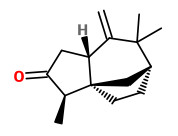 ziza-6(13)-ene-3-one (vetiver, fruity) | 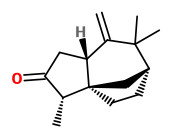 2-epi-ziza-6(13)-ene-3-one (vetiver, fruity, sour) | 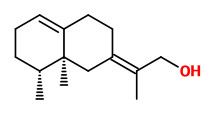 (E)-isovalencenol (sandalwood) | 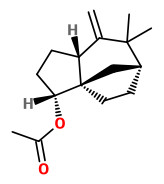 12‐nor‐ziza‐6(13)‐en‐2α‐yl acetate (vetiver‐like, grapefruit‐like, strong) |
Identified odor-active constituents of Haitian vetiver oil were:
2-methylfuran-3‐thiol (meaty, nutty), guaiacol (earthy, leek-like), p-ethylphenol (leather-like, burnt), p-vinylphenol (metallic, phenolic), p-vinylguaiacol (smoky, warm), β-damascenone (fruity sweet, plum‐like), vanillin (vanilla-like), geosmin (earthy, muddy), (E)‐isoeugenol (clove‐like, smoky), dihydroeugenol (dill‐like, coconut), β-vetivenene (carrot‐like, flowery), β-elemol (carrot‐like, pelargonium‐like), cyclocopacamphanal (marine, aqueous), khusimone (vetiver‐like, grapefruit, flowery), ziza‐6(13)‐en‐3‐one (vetiver, woody, fruity), ziza‐6(13)‐en‐3‐α‐ol (vetiver‐like, cedarwood), 2‐epi‐ziza‐6(13)‐en‐3‐one (vetiver, fruity, sour), khusian‐2‐ol (fruity, sweet, woody), β-vetivol
(intensely rosy, citrus‐like), khusimol (vetiver‐like), (E)‐isovalencenol (sandalwood‐like), spiroveta‐3,7(11)‐dien‐12‐ol (baked apple, soft‐fruit), nootkatone (grapefruit‐like, bitter, sour), β-vetivone (grapefruit‐like, fruity), α-vetivone (lime‐like, hesperidic, rosy, exotic fruit).
From 16 odor-active constituents of vetiveryl acetate (ex Haitian vetiver oil), 8 were identified: khusimone, ziza‐6(13)‐en‐3‐one, 2‐epi‐ziza‐6(13)‐en‐3‐one, khusian-2-ol, 12‐nor‐ziza‐6(13)‐en‐2α‐yl acetate (vetiver‐like, grapefruit‐like, strong), nootkatone, β-vetivone and α-vetivone.
[Unravelling the Scent of Vetiver: Identification of Character‐Impact Compounds., Belhassen, E., Baldovini, N., Brevard, H., Meierhenrich, U.J., Filippi, J.J., Chemistry & biodiversity, 11(11), 2014, 1821-1842]
„The characterization of the odour-active constituents of VEO [vetiver essential oil] is another example of a task that is particularly difficult when dealing with such complex materials. It obviously should be based on as complete as possible knowledge of the chemical composition, but it is also necessary that the sensorial analyses use samples of constituents at their highest state of olfactory purity. A good example of the difficulty of these determinations is furnished inter alia by the odorant activity of vetiselinenol. The Weyerstahl studies on essential oils are undoubtedly the most extensive analytical investigations ever conducted on complex oils, but despite his efforts to characterize the structures and the odour of many of VEO constituents, he attributed a ‘Woody, vetiver, cedar, ambra-like’ note to this ‘strong smelling component’ and reported that, with khusimol and (E)-isovalencol, it was ‘responsible for the base note’. When a high-resolution approach such as GC-O was used, vetiselenenol proved to be odourless for all of the panelists, and khusimol had apparently a much lower olfactory contribution to the whole oil than many other constituents, such as ziza-6(13)-ene-3-one and 2-epi-ziza-6(13)-ene-3-one.“
[Volatile constituents of vetiver: a review., Belhassen, E., Filippi, J.J., Brévard, H., Joulain, D., Baldovini, N., Flavour and Fragrance Journal, 30(1), 2015, 26-82] http://onlinelibrary.wiley.com/doi/10.1002/ffj.3227/pdf
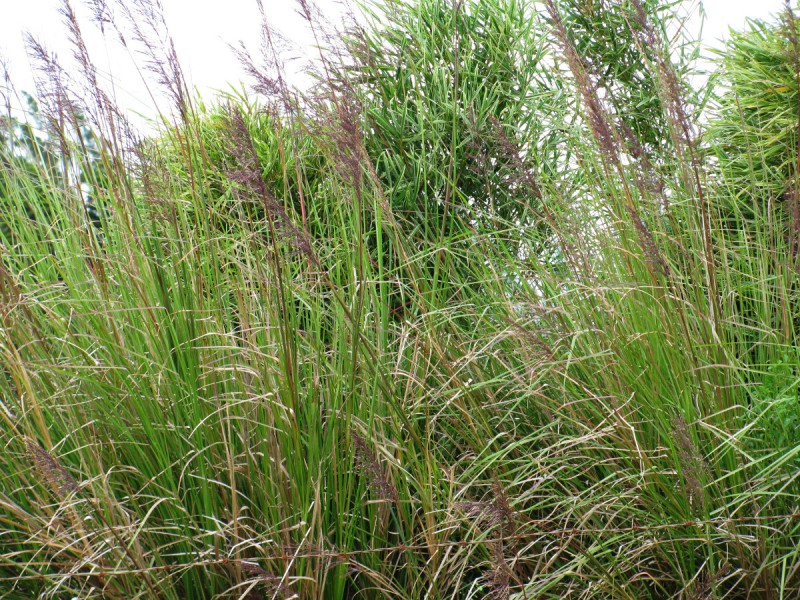
Chrysopogon zizanioides-seeding habit-Kokomo Haiku (2009)
Wikimedia Commons, Author: Forest and Kim Starr CC BY-SA 2.0
